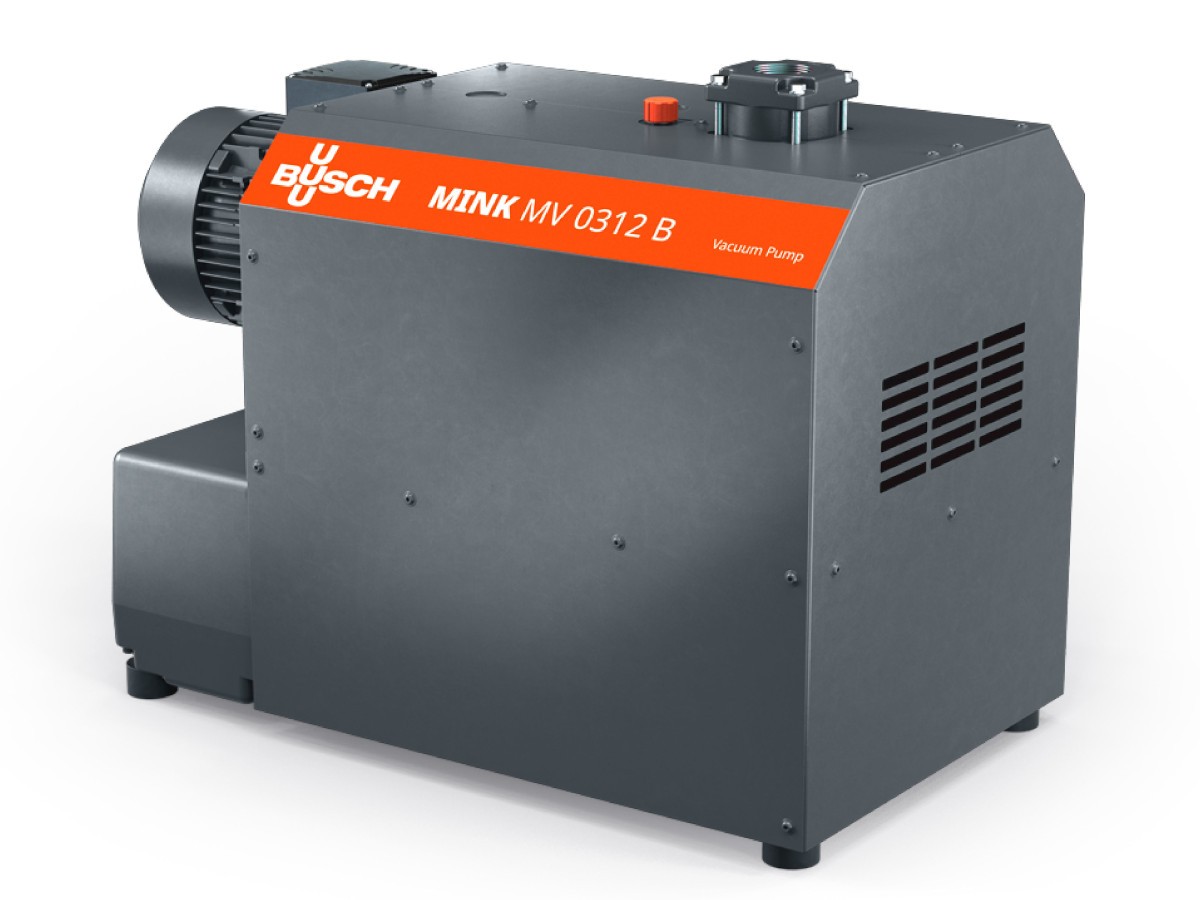ContiTech Antriebssysteme GmbH (ContiTech Power Transmission Group) was able to significantly increase the energy efficiency of its vulcanization systems by using the latest vacuum technology for degassing the molds in vulcanization boilers.
Previously, only liquid ring vacuum pumps were used in all systems – until testings started with MINK claw vacuum pumps from Busch at the beginning of 2017. The results were astounding, proving that neither water nor other operating fluids are required and that energy consumption is radically reduced.

MINK claw vacuum pump from Busch. Source: Busch Vacuum Solutions.
Modern Vacuum Technology Increases Energy Efficiency during Vulcanization
ContiTech Antriebssysteme GmbH
About ContiTech
As a manufacturer of the entire spectrum of drive belts, ContiTech offers a comprehensive range of rubber belts used in practically all industrial applications. The belts are manufactured in vulcanization systems consisting of several autoclaves. Depending on the size of the vulcanization systems, one vacuum pump can be connected to one system or several systems can be supplied with vacuum simultaneously by a single vacuum pump. Operations are carried out in three shifts in batch mode. This means that the vacuum pumps are permanently in use around the clock.Degassing process
Liquid ring vacuum pumps were originally used for degassing the rubber mass. Because the central cooling water network at ContiTech Antriebssysteme reached the limit of its capacity, Anja Horn, who is responsible for energy efficiency, analyzed the individual water consumers in the plant. On average, the liquid ring vacuum pumps consumed about seven cubic meters of water per hour. In addition, a container with a fresh water reservoir was installed on each vacuum pump. Due to rapid contamination, the water had to be replenished or replaced with fresh water on a regular basis. In addition to the high water consumption, the high water temperatures had a negative effect on the cycle and the supply. As a result of excessive water temperatures, the desired vacuum level of 200 millibar in the autoclaves could not always be achieved. The reason for this is that the vacuum to be achieved in a liquid ring vacuum pump depends, among other things, on the water temperature. Liquid ring vacuum pumps only reach their optimum vacuum level at a water temperature of 15 °C.The liquid ring vacuum pumps used had a power consumption of six kilowatts each. As the vacuum pumps operated in three shifts seven days a week, each machine worked a total of 8,000 operating hours per year. This corresponded to 48,000 kilowatt hours per year.
Vacuum solution and its benefits for the customer
Maintenance was looking for a technical solution to reduce both energy and water consumption. It was also important to improve reliability as much as possible. If, for example, a leak in the system caused vapor to enter a liquid ring vacuum pump, they reached their capacity limits and the vacuum level in the autoclaves deteriorated drastically. In the past, an average of one liquid ring vacuum pump per year had to be replaced because the vulcanization process caused deposits and corrosion in the vacuum pumps.ContiTech found an alternative to its previous vacuum generation approach in the MINK claw vacuum pump from Busch. As early as 2017, a MINK claw vacuum pump was installed in a vulcanization system for test purposes as an alternative to a liquid ring vacuum pump. MINK claw vacuum pumps do not require water or any other operating fluid to generate vacuum.
MINK claw vacuum pumps do not require water or any other operating fluid to generate vacuum.